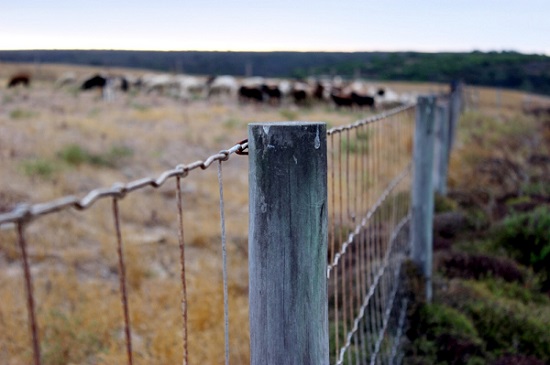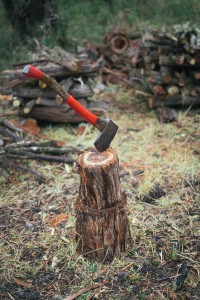
One of the most common learning difficulties is dyslexia, which can cause problems with reading, writing, and spelling. Unlike a learning disability, dyslexia does not affect a child’s intelligence.
There are misconceptions about dyslexia. It has been said that dyslexia is caused by vision problems; the truth is, it is a hereditary learning difficulty. A child with a dyslexic parent has a higher probability of being dyslexic as well. Another misconception is that dyslexia can be outgrown. While there is no “cure” for dyslexia, early intervention and proper science-based instruction are crucial in helping dyslexic students become fluent and skilled readers.
Be on the lookout for these early warning signs of dyslexia so intervention can take place as soon as possible.
Early signs of dyslexia
Children find it difficult to articulate what’s on their mind. Observe how they speak; it might take a few moments before they could express something, even if the concept is familiar to them. It might seem like a normal interaction, but when the pauses happen frequently, it could be a sign that the child is struggling to retrieve information.
Watch out for subtle nuances. Switching words can be a red flag; a child for example would say “predator” instead of “president.” Moreover, the child has not expressed any interest in books, reading, or being read to; learning language might be overwhelming for them.
Children with dyslexia will confuse pronouns and have difficulty with learning how to rhyme since there’s a disconnect between the words and their sounds. They gravitate towards picture books even when they are in middle school and seldom choose text-heavy books.
They do not have a strong phonological awareness. When they hear a word that does not naturally conform with what they know about language, children with strong phonological awareness would stop and ask themselves, “Did I read that wrong? Did someone spell that wrong?” and try to correct the error. Dyslexic children do not have the natural ability to identify these errors.
Dyslexic students have a hard time with rapid naming tests. Students would usually learn the names of colors, letters, and numbers quickly as soon as they enter school and formal instruction begins. A child struggling with dyslexia cannot easily recall the words when they see a visual stimulus. He or she might be thinking, “I see something red, I know what it is, but I don’t know what to call it.”
Look into their handwriting. Because reading and writing rely on related underlying processes, dyslexia can manifest through the child’s writing as well. Signs include poor spelling, poor legibility, lack of a diverse vocabulary, poor idea development, and/or lack of organization.
Practical strategies that work for students with dyslexia
Keep in mind that students with dyslexia are learning to read, and not reading to learn. They have already developed a negative attitude towards reading and would rather not do it given the chance. It’s thus important to explore and use all teaching modalities possible. Pair a physical book with an audio guide, for example.
Providing structure and routine to the learning process. Knowing what happens next gives them peace of mind. Students with dyslexia lose their sense of security when they are tasked to read a book; they feel that their weaknesses are exposed for all the world to see.
They also want to understand why things are the way they are (i.e., why a word is spelled a certain way while another word is spelled differently).
Acknowledge and embrace their strengths. Celebrate triumphs such as a word spelled correctly or a sentence read beautifully. This makes a huge difference.
Encourage reading for pleasure. Let them read what they want to read and at their own pace.
Simultaneous oral spelling is highly recommended. Students hear the adult say the word out loud and then they repeat the word, making sure they have the correct mouth movement. They write the letters, say them out loud, feel the motor movements of their mouth, feel the movement of their hands as they write the letters, and see the word they wrote. They then read the word they wrote. Seeing all the elements come together helps students understand how words are formed.
Use a phonics phone. It’s a simple tube shaped like a telephone receiver, often made from plastic PVC pipe. This allows the students to speak quietly in one end and hear their own voice through the other, helping them identify subtle sounds they might not have heard otherwise.
Enroll them in a school that understands their needs. From the Lower School to the Upper School and Residential Life program, Currey Ingram Academy provides a safe, nurturing, and stimulating environment to students in grades K-12 as they acquire the skills to excel in reading and writing. A private boarding school in Brentwood, Currey Ingram Academy understands that students learn differently; teachers use different evidence-based instructional practices and present material through individualized, structured, and multisensory approaches (visual, auditory, and kinesthetic) to best meet the instructional and learning needs of each student.
Specializing in dyslexia, private boarding school Currey Ingram Academy supports and empowers students with learning differences to achieve their fullest potential – academically and socially – within an environment that fosters holistic student development. Get in touch by calling (615) 507-3173.


 It can be said that a home is a reflection of its owners. Because of this, you always want to keep it looking as best as it can create a favorable first impression. Nice homes can have trimmed hedges, gates that aren’t rusting, and walls that have a fresh coat of paint.
It can be said that a home is a reflection of its owners. Because of this, you always want to keep it looking as best as it can create a favorable first impression. Nice homes can have trimmed hedges, gates that aren’t rusting, and walls that have a fresh coat of paint.
 To many, deer are graceful and enchanting animals. It’s easy to associate deer with the great outdoors and country living. Although they have a docile reputation, deer are also capable of destroying fruits, vegetables, and flowers in cultivated areas such as a garden or farm. If you live near an area with a large deer population, you can prevent this by having professional
To many, deer are graceful and enchanting animals. It’s easy to associate deer with the great outdoors and country living. Although they have a docile reputation, deer are also capable of destroying fruits, vegetables, and flowers in cultivated areas such as a garden or farm. If you live near an area with a large deer population, you can prevent this by having professional  When it comes to German luxury cars, Mercedes-Benz is a crowd favorite. The engineering, style, and drive for innovation sets Mercedes-Benz apart from the rest.
When it comes to German luxury cars, Mercedes-Benz is a crowd favorite. The engineering, style, and drive for innovation sets Mercedes-Benz apart from the rest. 

 Many of our clients have asked why a sealcoating company also offers forestry mulching services. The simple answer is because we can. As a Nashville-based company, Hargrove Sealcoating, like all other outdoor industries, slows down periodically throughout the year. It would truly be a waste of equipment to let it sit idle when it could be put to good use. Further, because we can clear underbrush in any season, our staff has an opportunity to work year-round.
Many of our clients have asked why a sealcoating company also offers forestry mulching services. The simple answer is because we can. As a Nashville-based company, Hargrove Sealcoating, like all other outdoor industries, slows down periodically throughout the year. It would truly be a waste of equipment to let it sit idle when it could be put to good use. Further, because we can clear underbrush in any season, our staff has an opportunity to work year-round. As technology becomes more and more integrated into the workplace,
As technology becomes more and more integrated into the workplace,